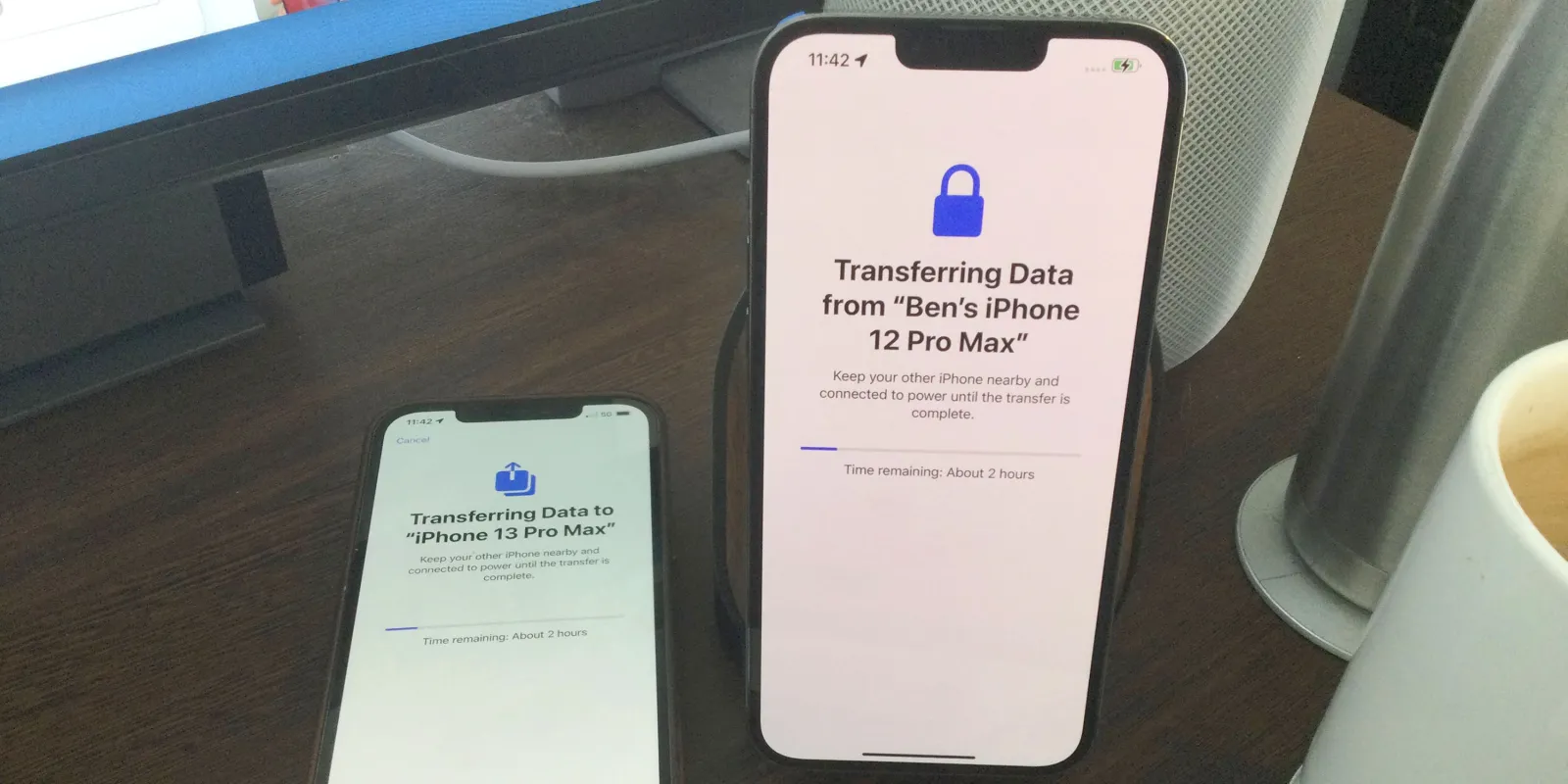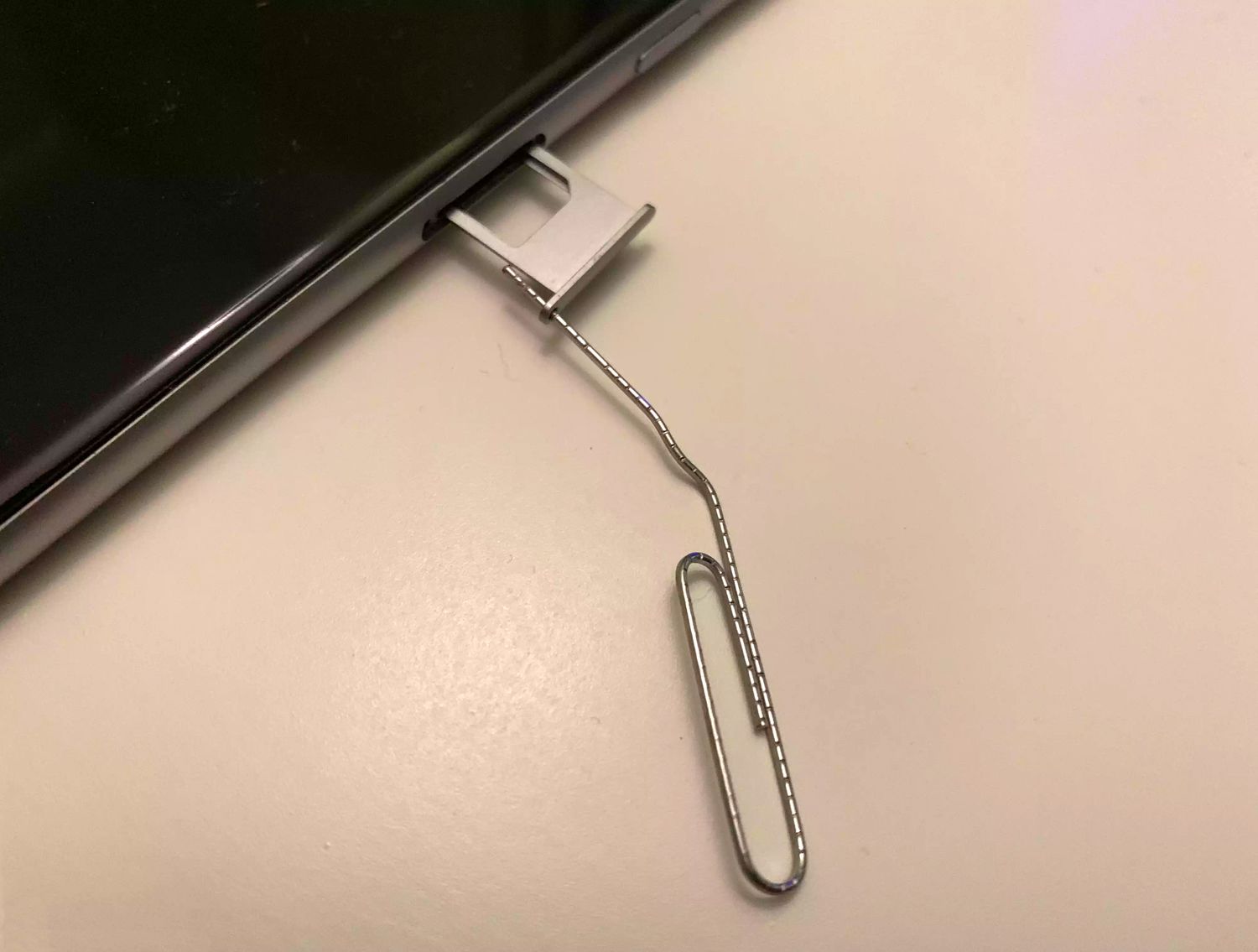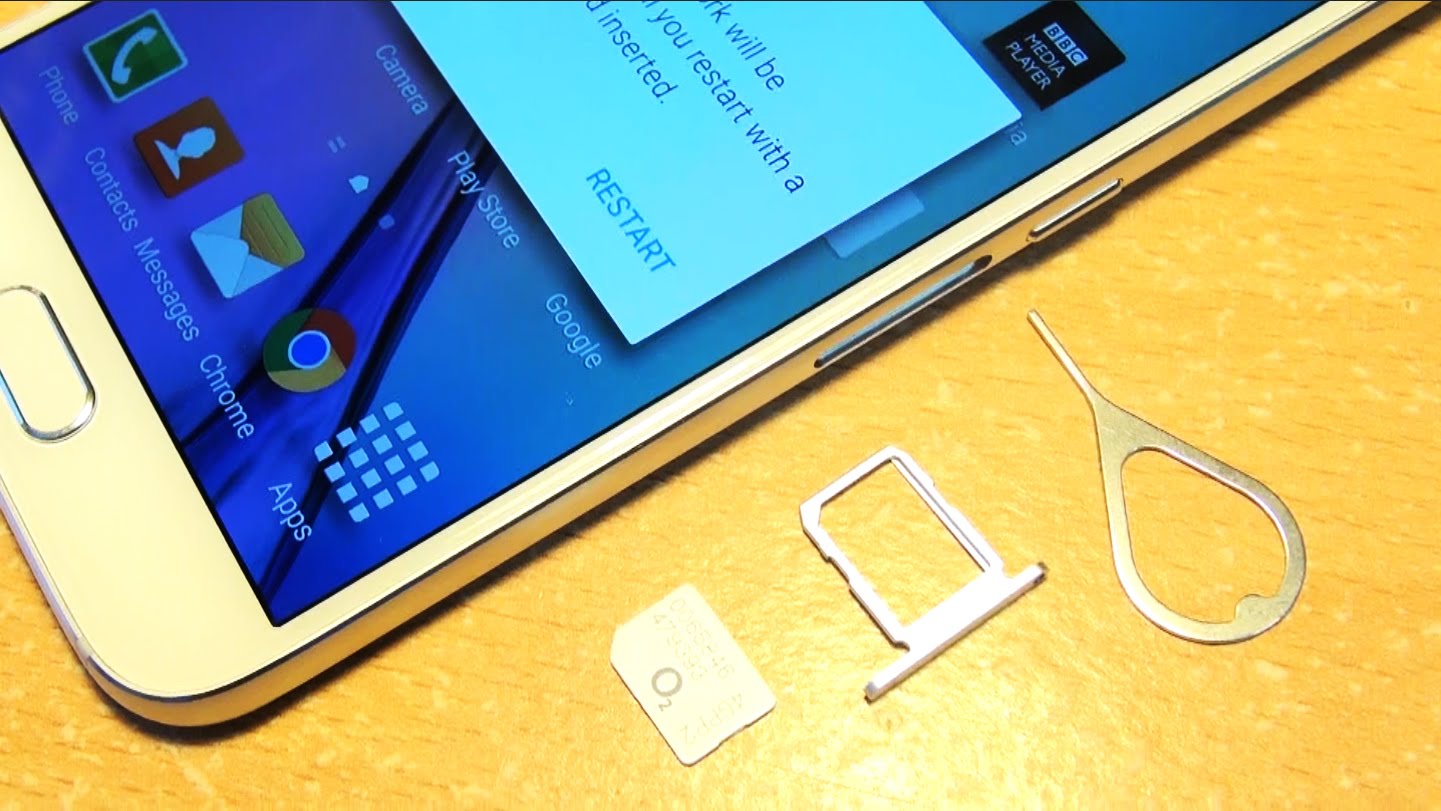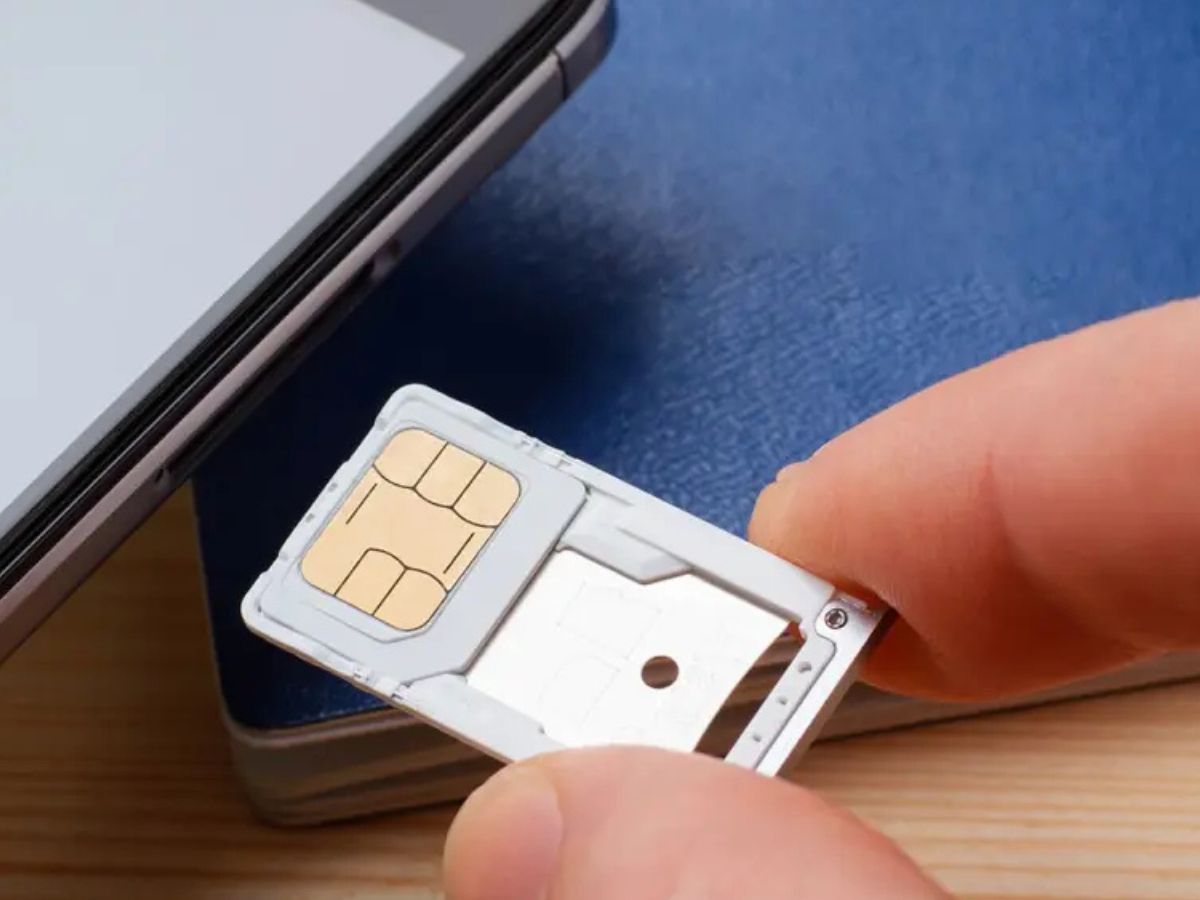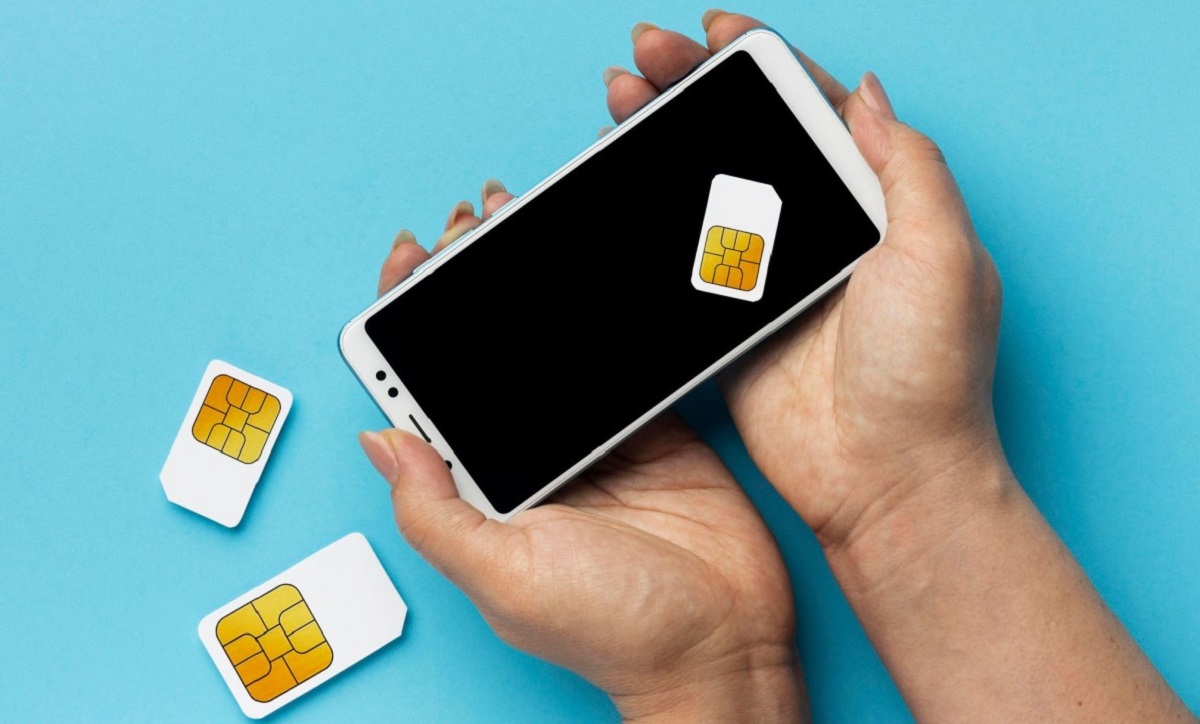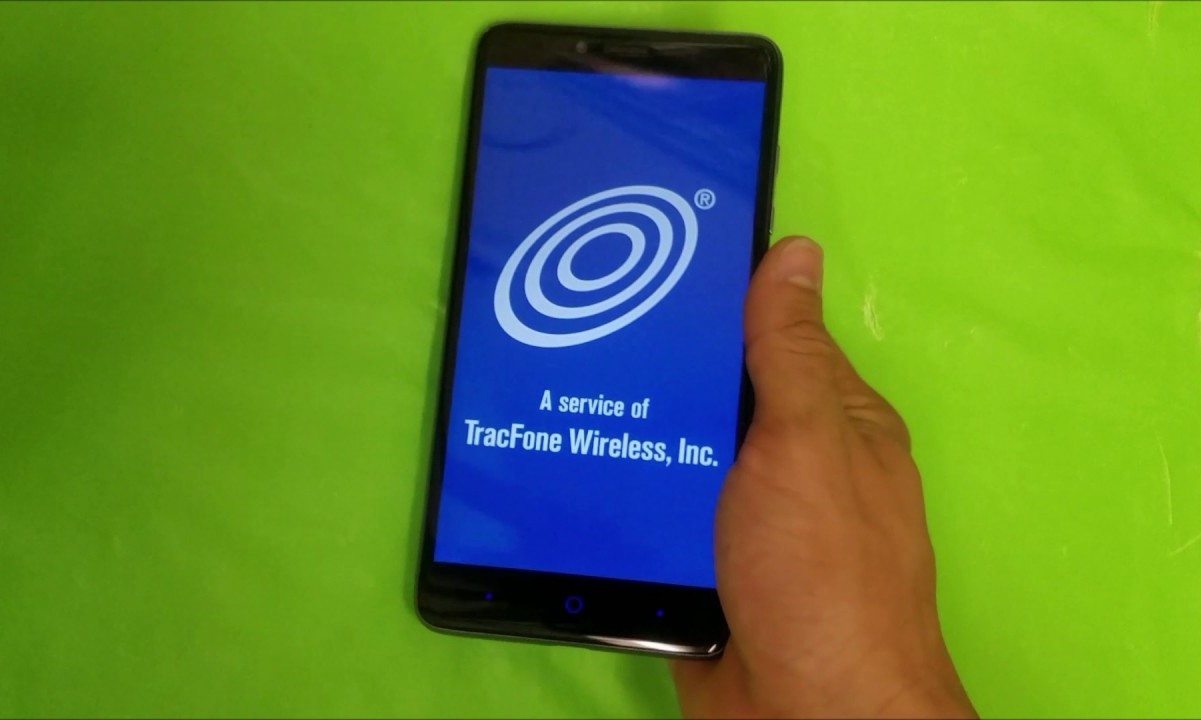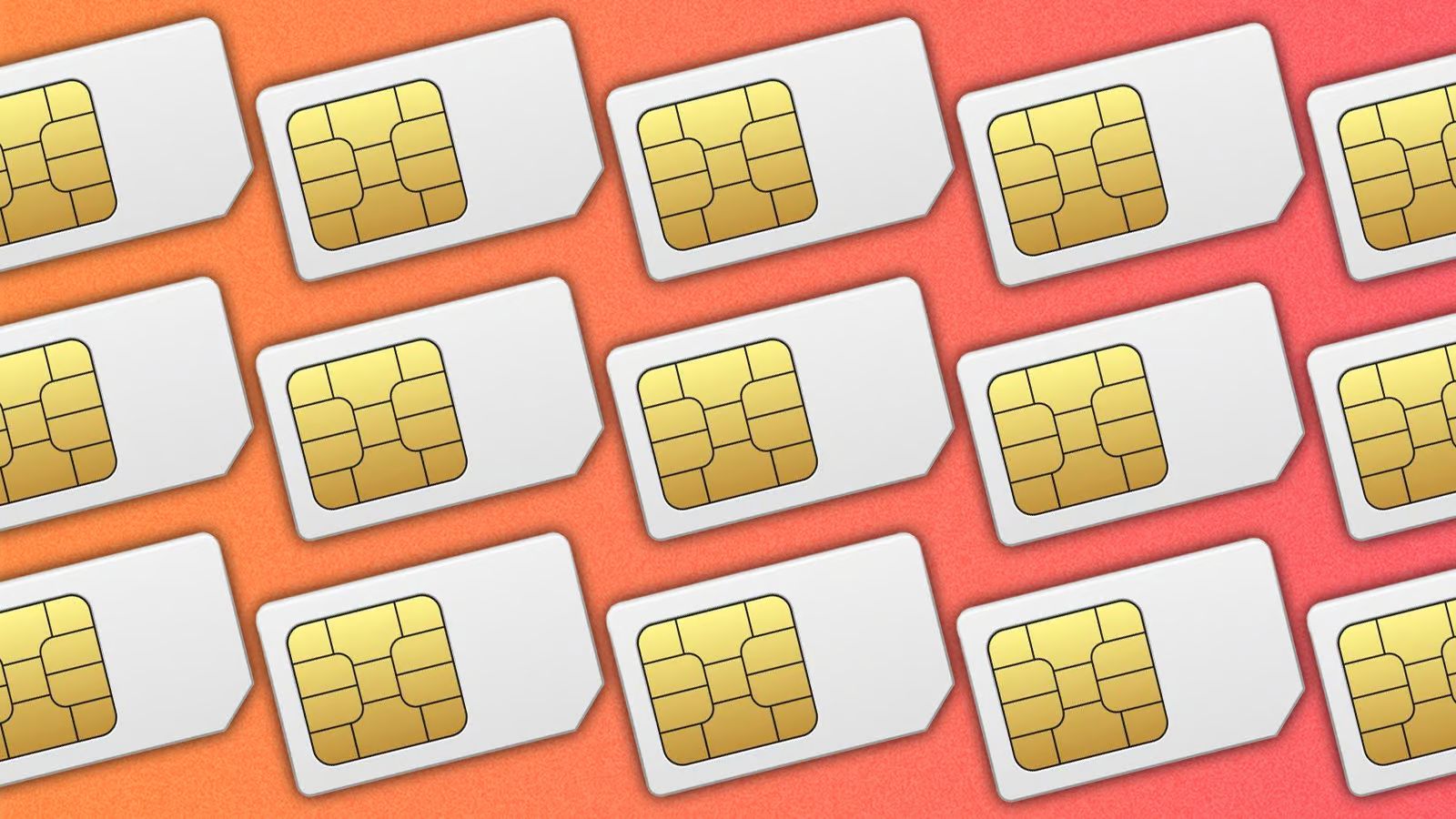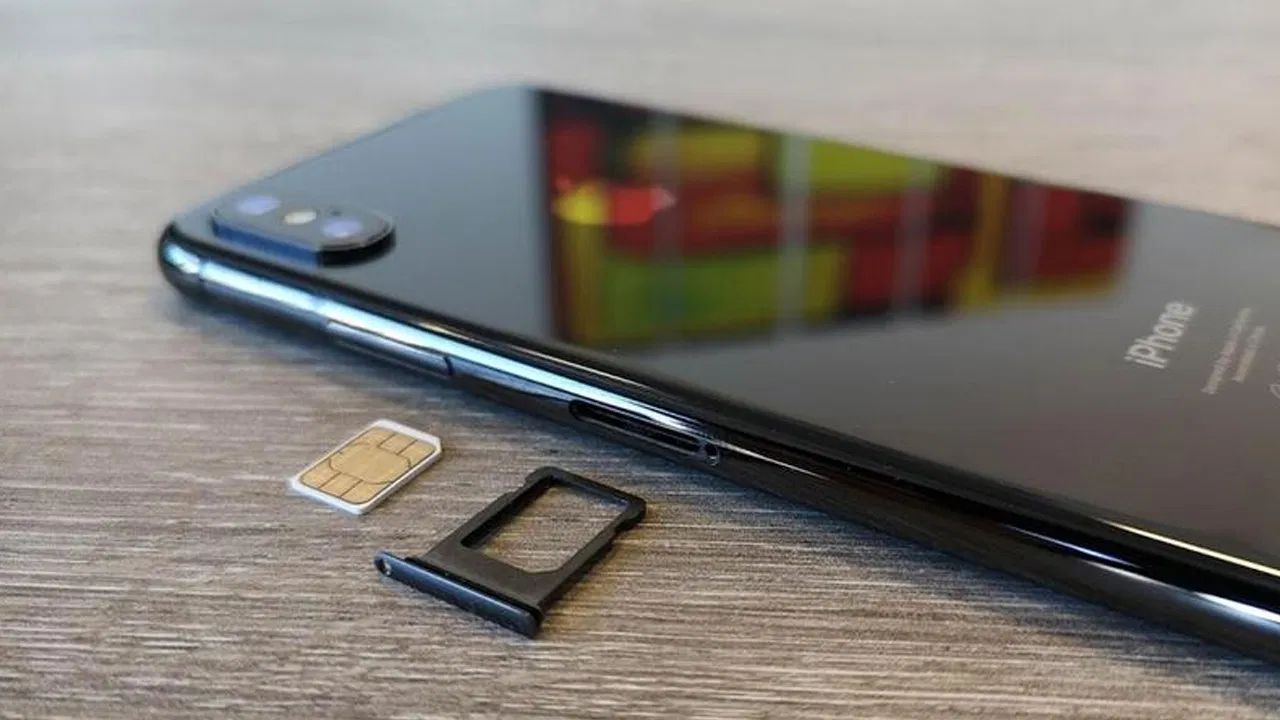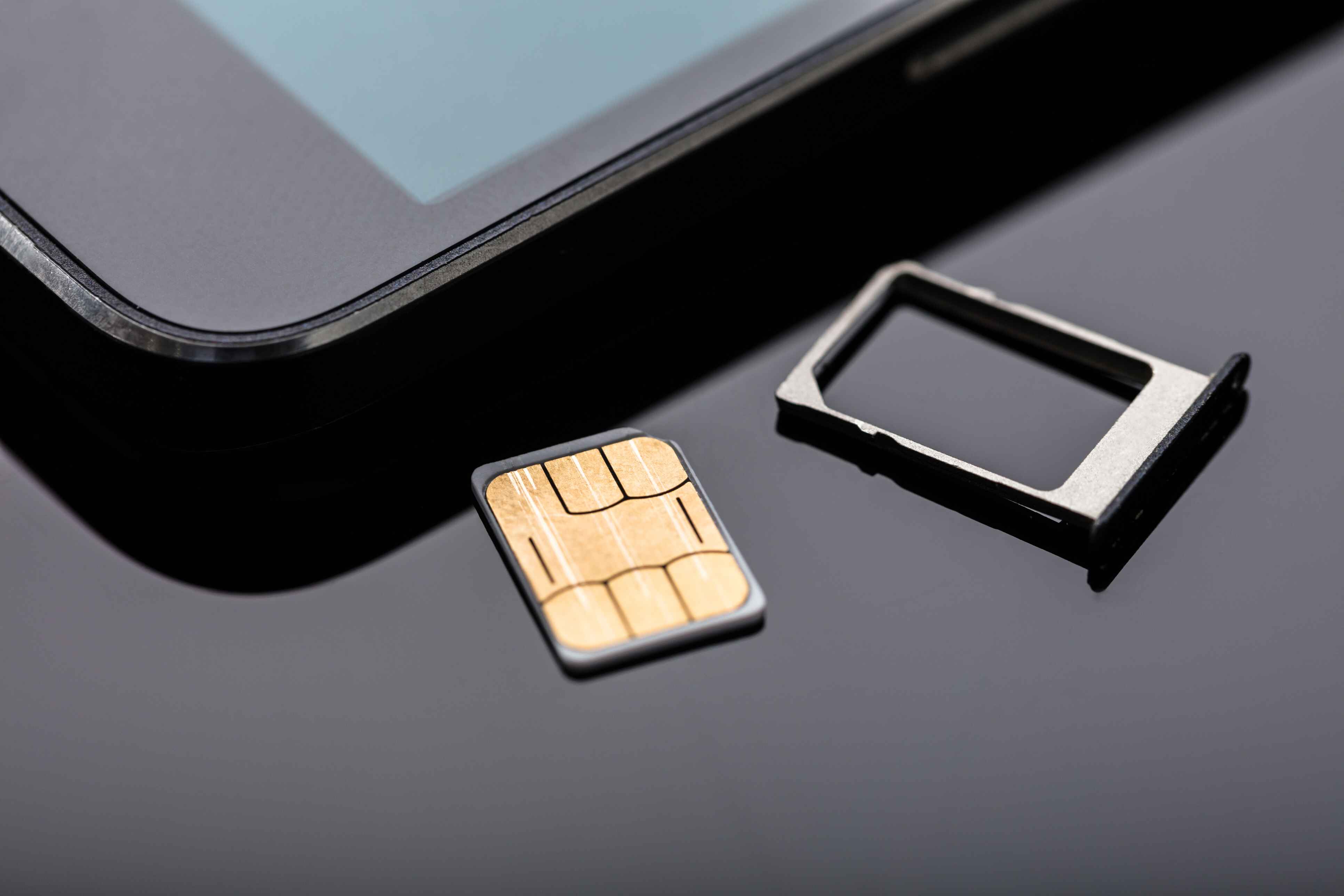Introduction
In today's fast-paced digital world, mobile devices have become an integral part of our daily lives. Whether it's staying connected with loved ones, accessing essential information, or capturing precious moments, our smartphones have evolved into indispensable tools. At the heart of this technology lies the Subscriber Identity Module (SIM) card, a small but powerful component that enables our devices to connect to mobile networks and access voice, text, and data services.
Understanding the functionality and versatility of SIM cards is crucial for anyone looking to switch or upgrade their mobile device. This comprehensive guide aims to demystify the process of transferring SIM cards between phones, providing valuable insights and step-by-step instructions for various scenarios. Whether you're transitioning from an old device to a new one or simply exploring the possibilities of cross-platform compatibility, this guide will equip you with the knowledge and confidence to navigate the intricacies of SIM card transfers.
As we delve into the intricate world of SIM cards and phone compatibility, it's essential to approach the process with a clear understanding of the underlying technology. From the physical characteristics of SIM cards to the compatibility considerations between different mobile platforms, this guide will address a wide array of scenarios and potential challenges. By leveraging this knowledge, you'll be empowered to seamlessly transfer your SIM card between devices, ensuring uninterrupted connectivity and a smooth transition to your new phone.
With a focus on practicality and user-friendly instructions, this guide will equip you with the necessary tools to tackle common issues and optimize the transfer process. Whether you're an Android enthusiast, an avid iPhone user, or someone navigating the transition between platforms, this guide will cater to your specific needs and provide actionable insights for a successful SIM card transfer.
Join us on this journey as we unravel the intricacies of SIM card transfers, empowering you to make informed decisions and navigate the ever-evolving landscape of mobile technology with confidence and ease. Let's embark on this exciting exploration of SIM card transfers, unlocking new possibilities and ensuring seamless connectivity across your mobile devices.
Understanding SIM Cards
A Subscriber Identity Module (SIM) card serves as a pivotal element in the functionality of mobile devices, playing a crucial role in connecting users to their respective mobile networks. This small, thumbnail-sized card securely stores essential information, including the user's identity, network authentication key, contacts, and text messages. The SIM card essentially acts as a unique identifier for the user, allowing them to access voice, text, and data services on their mobile device.
SIM cards come in various physical sizes, including Standard SIM, Micro SIM, and Nano SIM, to accommodate different device specifications. The evolution of mobile technology has led to the development of smaller SIM card formats, with the Nano SIM being the most common in modern devices. Despite their varying sizes, all SIM cards function in a similar manner, enabling users to seamlessly connect to cellular networks and enjoy the full spectrum of mobile services.
One of the key features of SIM cards is their portability, allowing users to easily transfer their SIM card from one compatible device to another. This flexibility enables users to upgrade to a new phone, switch between devices, or replace a malfunctioning handset without losing their mobile identity and stored data. By simply transferring the SIM card, users can maintain their existing phone number, contacts, and network connectivity, streamlining the transition process and minimizing disruptions to their mobile experience.
In addition to facilitating network connectivity, SIM cards also play a vital role in ensuring the security and integrity of mobile communications. The unique authentication key stored within the SIM card establishes a secure connection between the user's device and the mobile network, safeguarding against unauthorized access and potential security breaches. This layer of encryption and authentication enhances the overall privacy and security of mobile communications, instilling confidence in users as they engage with various services and applications on their devices.
As mobile technology continues to advance, the role of SIM cards remains integral to the seamless functioning of mobile devices. Whether it's enabling global roaming, supporting advanced mobile services, or ensuring secure authentication, SIM cards are fundamental to the modern mobile experience. Understanding the significance of SIM cards empowers users to make informed decisions when it comes to device upgrades, network transitions, and the overall management of their mobile connectivity.
By grasping the fundamental concepts and capabilities of SIM cards, users can navigate the intricacies of mobile technology with confidence, leveraging the portability and security features of SIM cards to optimize their mobile experience and stay connected in an increasingly dynamic and interconnected world.
Preparing for SIM Card Transfer
Before embarking on the process of transferring your SIM card between phones, it's essential to prepare diligently to ensure a seamless and successful transition. Proper preparation not only simplifies the transfer process but also minimizes the risk of potential issues that may arise during the transfer. Here's a comprehensive guide to preparing for a SIM card transfer:
1. Backup Your Data:
Prior to initiating the SIM card transfer, it's crucial to create a backup of your existing data, including contacts, messages, and any other pertinent information stored on your current device. This can be accomplished by utilizing the backup features inherent in your device's operating system or by leveraging cloud-based storage solutions. By safeguarding your data, you'll mitigate the risk of data loss and ensure that your essential information is readily accessible on your new device.
2. Gather Necessary Tools:
Depending on the specific requirements of your devices, you may need additional tools to facilitate the SIM card transfer. For devices that utilize different SIM card sizes, such as transitioning from a device that requires a Nano SIM to one that accommodates a Micro SIM, a SIM card adapter or cutter may be necessary to ensure compatibility. Additionally, having a SIM card removal tool or a small paperclip on hand can simplify the process of accessing and swapping SIM cards.
3. Verify Compatibility:
Before proceeding with the SIM card transfer, it's imperative to verify the compatibility of your new device with the SIM card from your current device. This includes ensuring that the new device is unlocked and compatible with the mobile network associated with your SIM card. Furthermore, if you're transitioning between different mobile platforms, such as from Android to iPhone or vice versa, it's essential to confirm the cross-platform compatibility of your SIM card to prevent any potential issues.
4. Familiarize Yourself with Device Specifications:
Each mobile device may have unique specifications and requirements when it comes to SIM card installation and activation. Familiarizing yourself with the specific guidelines and instructions provided by the device manufacturer can streamline the transfer process and help you navigate any device-specific nuances related to SIM card installation and activation.
By meticulously preparing for the SIM card transfer, you'll set the stage for a smooth and efficient transition between devices, ensuring that your connectivity and essential data remain intact throughout the process. With these preparatory steps in place, you'll be well-equipped to proceed with confidence as you navigate the intricacies of transferring your SIM card to a new mobile device.
Transferring SIM Card from Android to Android
Transferring a SIM card from one Android device to another is a straightforward process that allows users to seamlessly transition their mobile identity and connectivity. Whether you're upgrading to a new Android phone or simply switching between compatible devices, the following steps will guide you through the process of transferring your SIM card:
-
Power Off Both Devices: Before initiating the SIM card transfer, power off both the old and new Android devices to ensure a safe and smooth transition. This precautionary step prevents any potential issues during the SIM card removal and insertion process.
-
Locate the SIM Card Slot: Most Android devices feature a designated slot for the SIM card, typically located on the side of the device or beneath the back cover. Use the SIM card removal tool or a small paperclip to gently eject the SIM card tray from the old device.
-
Remove the SIM Card: Carefully remove the SIM card from the tray, ensuring that it is handled with caution to avoid any damage. Take note of the orientation of the SIM card, as it needs to be inserted into the new device in the same position.
-
Insert the SIM Card: With the old SIM card in hand, locate the SIM card slot on the new Android device and proceed to insert the SIM card into the designated slot. Ensure that the SIM card is securely placed and that the tray is properly aligned before gently pushing it back into the device.
-
Power On the New Device: Once the SIM card is inserted, power on the new Android device and allow it to initialize. As the device boots up, it will detect the presence of the SIM card and establish connectivity with the associated mobile network.
-
Verify Network Connectivity: After the device has fully powered on, verify that the new Android device recognizes the SIM card and successfully connects to the mobile network. This can be confirmed by checking for signal reception and ensuring that voice, text, and data services are accessible.
By following these steps, you can effectively transfer your SIM card from one Android device to another, ensuring a seamless transition of your mobile identity and connectivity. This straightforward process allows you to maintain continuity in your mobile services while enjoying the benefits of a new or alternative Android device.
Transferring SIM Card from iPhone to iPhone
Transferring a SIM card from one iPhone to another is a relatively straightforward process that enables users to seamlessly transition their mobile identity and connectivity. Whether you're upgrading to a new iPhone model or simply switching between compatible devices, the following steps will guide you through the process of transferring your SIM card:
-
Power Off Both Devices: Before initiating the SIM card transfer, power off both the old and new iPhone devices to ensure a safe and smooth transition. This precautionary step helps prevent any potential issues during the SIM card removal and insertion process.
-
Locate the SIM Card Tray: iPhones are designed with a SIM card tray located on the side of the device. Use the SIM card removal tool or a small paperclip to gently eject the SIM card tray from the old iPhone.
-
Remove the SIM Card: Carefully remove the SIM card from the tray, handling it with caution to avoid any damage. Take note of the orientation of the SIM card, as it needs to be inserted into the new device in the same position.
-
Insert the SIM Card: With the old SIM card in hand, locate the SIM card tray on the new iPhone and proceed to insert the SIM card into the designated slot. Ensure that the SIM card is securely placed and that the tray is properly aligned before gently pushing it back into the device.
-
Power On the New Device: Once the SIM card is inserted, power on the new iPhone and allow it to initialize. As the device boots up, it will detect the presence of the SIM card and establish connectivity with the associated mobile network.
-
Verify Network Connectivity: After the device has fully powered on, verify that the new iPhone recognizes the SIM card and successfully connects to the mobile network. This can be confirmed by checking for signal reception and ensuring that voice, text, and data services are accessible.
By following these steps, you can effectively transfer your SIM card from one iPhone to another, ensuring a seamless transition of your mobile identity and connectivity. This straightforward process allows you to maintain continuity in your mobile services while enjoying the benefits of a new or alternative iPhone device.
Transferring SIM Card from Android to iPhone
Transferring a SIM card from an Android device to an iPhone involves navigating the compatibility differences between the two mobile platforms. While the process may seem challenging due to the distinct nature of Android and iOS devices, it is indeed feasible with careful execution. Here's a comprehensive guide to transferring your SIM card from an Android device to an iPhone:
-
Check SIM Card Compatibility: Before initiating the transfer, it's crucial to ensure that your SIM card is compatible with the iPhone. Since Android devices typically use Micro or Nano SIM cards, and iPhones predominantly utilize Nano SIM or eSIM technology, it's essential to verify that your SIM card aligns with the iPhone's specifications. If your SIM card is larger than the Nano SIM required for the iPhone, you may need to visit your mobile carrier to obtain a compatible SIM card.
-
Backup Android Data: Prior to the transfer, it's advisable to back up your Android device's data, including contacts, messages, and any essential information. This can be accomplished through various methods, such as utilizing cloud-based services or the native backup functionality on your Android device. By safeguarding your data, you'll ensure that it remains accessible during and after the transition to the iPhone.
-
Obtain a SIM Card Ejector Tool: iPhones are equipped with a SIM card tray located on the side of the device, which requires a SIM card ejector tool or a paperclip to access. Ensure that you have the necessary tool on hand to safely remove the SIM card from your Android device and subsequently insert it into the iPhone.
-
Power Off Both Devices: Before proceeding with the transfer, power off both the Android device and the iPhone to prevent any potential issues during the SIM card removal and insertion process.
-
Remove the SIM Card from Android: Using the SIM card ejector tool, carefully remove the SIM card from the Android device. Handle the SIM card with caution to avoid any damage, and take note of its orientation for proper insertion into the iPhone.
-
Insert the SIM Card into iPhone: Locate the SIM card tray on the iPhone and proceed to insert the SIM card into the designated slot. Ensure that the SIM card is securely placed and that the tray is properly aligned before gently pushing it back into the device.
-
Power On the iPhone: Once the SIM card is inserted, power on the iPhone and allow it to initialize. The device will detect the presence of the SIM card and establish connectivity with the associated mobile network.
-
Verify Network Connectivity: After the iPhone has fully powered on, verify that it recognizes the SIM card and successfully connects to the mobile network. This can be confirmed by checking for signal reception and ensuring that voice, text, and data services are accessible.
By following these steps, you can effectively transfer your SIM card from an Android device to an iPhone, ensuring a seamless transition of your mobile identity and connectivity. While the process may require attention to compatibility details and the use of specific tools, it ultimately enables you to maintain continuity in your mobile services as you transition to an iPhone.
Transferring SIM Card from iPhone to Android
Transferring a SIM card from an iPhone to an Android device involves navigating the compatibility differences between the two mobile platforms. While the process may seem challenging due to the distinct nature of iOS and Android devices, it is indeed feasible with careful execution. Here's a comprehensive guide to transferring your SIM card from an iPhone to an Android device:
-
Check SIM Card Compatibility: Before initiating the transfer, it's crucial to ensure that your SIM card is compatible with the Android device. Since iPhones predominantly utilize Nano SIM or eSIM technology, and Android devices may require Micro or Nano SIM cards, it's essential to verify that your SIM card aligns with the specifications of the Android device. If your SIM card is larger than the required size for the Android device, you may need to visit your mobile carrier to obtain a compatible SIM card.
-
Backup iPhone Data: Prior to the transfer, it's advisable to back up your iPhone's data, including contacts, messages, and any essential information. This can be accomplished through various methods, such as utilizing cloud-based services or the native backup functionality on your iPhone. By safeguarding your data, you'll ensure that it remains accessible during and after the transition to the Android device.
-
Obtain a SIM Card Ejector Tool: Android devices typically feature a SIM card tray that requires a SIM card ejector tool or a paperclip to access. Ensure that you have the necessary tool on hand to safely remove the SIM card from your iPhone and subsequently insert it into the Android device.
-
Power Off Both Devices: Before proceeding with the transfer, power off both the iPhone and the Android device to prevent any potential issues during the SIM card removal and insertion process.
-
Remove the SIM Card from iPhone: Using the SIM card ejector tool, carefully remove the SIM card from the iPhone. Handle the SIM card with caution to avoid any damage, and take note of its orientation for proper insertion into the Android device.
-
Insert the SIM Card into Android Device: Locate the SIM card slot on the Android device and proceed to insert the SIM card. Ensure that the SIM card is securely placed and that the tray is properly aligned before gently securing it into the device.
-
Power On the Android Device: Once the SIM card is inserted, power on the Android device and allow it to initialize. The device will detect the presence of the SIM card and establish connectivity with the associated mobile network.
-
Verify Network Connectivity: After the Android device has fully powered on, verify that it recognizes the SIM card and successfully connects to the mobile network. This can be confirmed by checking for signal reception and ensuring that voice, text, and data services are accessible.
By following these steps, you can effectively transfer your SIM card from an iPhone to an Android device, ensuring a seamless transition of your mobile identity and connectivity. While the process may require attention to compatibility details and the use of specific tools, it ultimately enables you to maintain continuity in your mobile services as you transition to an Android device.
Troubleshooting Common Issues
When transferring a SIM card between phones, it's essential to be prepared for potential challenges that may arise during the process. While the majority of SIM card transfers proceed smoothly, certain common issues can occasionally impede the seamless transition of connectivity. By being aware of these potential hurdles and understanding how to troubleshoot them, users can effectively address any issues that may arise. Here are some common issues encountered during SIM card transfers and troubleshooting steps to mitigate them:
-
No Network Connectivity: If the new device fails to establish network connectivity after the SIM card transfer, it's crucial to verify that the SIM card is inserted correctly. Ensure that the SIM card is securely placed in the designated slot and that the device recognizes it. Additionally, check for any network-related settings or restrictions that may need to be adjusted to facilitate network connectivity.
-
Incompatible SIM Card Size: When transitioning to a device that requires a different SIM card size than the one currently in use, users may encounter compatibility issues. In such cases, obtaining a SIM card adapter or visiting a mobile carrier to obtain a compatible SIM card of the required size can resolve this issue.
-
Activation and Registration Delays: In some instances, the new device may experience delays in activating the transferred SIM card or registering it with the mobile network. Patience is key in such situations, as network activation processes can vary in duration. However, if the delay persists, contacting the mobile carrier's customer support for assistance can expedite the activation process.
-
Data and Service Configuration: After the SIM card transfer, users may find that certain services or data features are not fully functional. This can be addressed by ensuring that the device's settings and configurations align with the requirements of the mobile network. Verifying the APN (Access Point Name) settings and ensuring that data services are enabled can help resolve such issues.
-
Device Recognition Errors: If the new device fails to recognize the transferred SIM card, it's advisable to power off the device, remove the SIM card, and reinsert it after carefully inspecting for any debris or damage. Additionally, performing a device restart and checking for software updates can rectify any recognition errors.
By being mindful of these common issues and the corresponding troubleshooting steps, users can navigate the process of transferring a SIM card between phones with confidence and efficiency. While encountering challenges during the transfer process is not uncommon, proactive troubleshooting and attention to detail can ensure a successful transition of connectivity and mobile identity.
Conclusion
In conclusion, the process of transferring a SIM card between phones encompasses a blend of practicality, compatibility considerations, and a touch of technological finesse. This comprehensive guide has shed light on the intricacies of SIM cards, the preparatory steps for a seamless transfer, and detailed instructions for various transfer scenarios. As we wrap up this journey through the realm of SIM card transfers, it's essential to emphasize the empowering nature of understanding and navigating the dynamics of mobile connectivity.
The versatility of SIM cards, from their physical form factors to their pivotal role in establishing secure mobile connections, underscores their significance in the mobile ecosystem. Their portability allows users to seamlessly transition between devices, ensuring continuity in network connectivity and the preservation of essential data. Whether it's the transition from an old device to a new one or the exploration of cross-platform compatibility, the ability to transfer a SIM card represents a gateway to uninterrupted mobile connectivity.
The preparatory steps outlined in this guide serve as a foundation for a smooth transfer process, emphasizing the importance of data backup, compatibility verification, and familiarity with device specifications. By meticulously preparing for a SIM card transfer, users can navigate potential challenges with confidence, safeguarding their data and optimizing the transition experience.
Furthermore, the step-by-step instructions for transferring SIM cards between Android and iPhone devices provide practical guidance for users seeking to embrace the capabilities of different mobile platforms. From power-off precautions to verifying network connectivity, each transfer scenario is accompanied by clear and concise instructions, enabling users to execute the transfer process with ease.
In addressing common issues and troubleshooting steps, this guide equips users with the knowledge to overcome potential hurdles that may arise during the transfer process. By anticipating and addressing issues such as network connectivity challenges, incompatible SIM card sizes, and activation delays, users can navigate the transfer process with resilience and resolve.
Ultimately, the journey of transferring a SIM card between phones embodies the spirit of adaptability and seamless connectivity. As mobile technology continues to evolve, the ability to transfer a SIM card represents a bridge between devices, enabling users to embrace new possibilities while preserving their mobile identity and connectivity.
With a deeper understanding of SIM cards and the transfer process, users are empowered to navigate the dynamic landscape of mobile devices with confidence, ensuring that their connectivity remains uninterrupted and their mobile experience remains seamless. As we conclude this guide, let's embrace the potential of SIM card transfers as a catalyst for embracing new devices and unlocking the full spectrum of mobile connectivity with ease and assurance.







